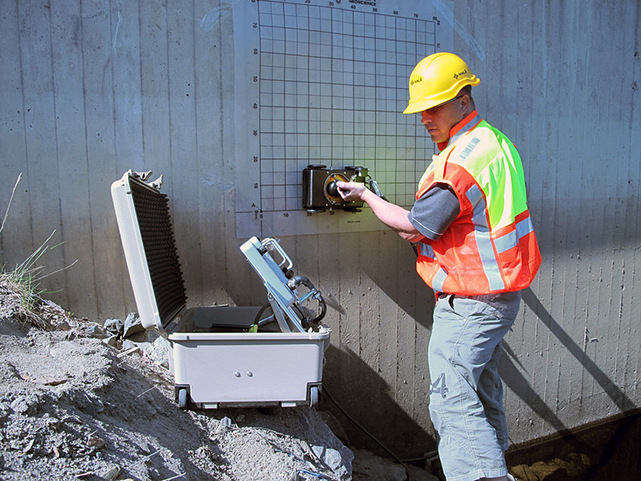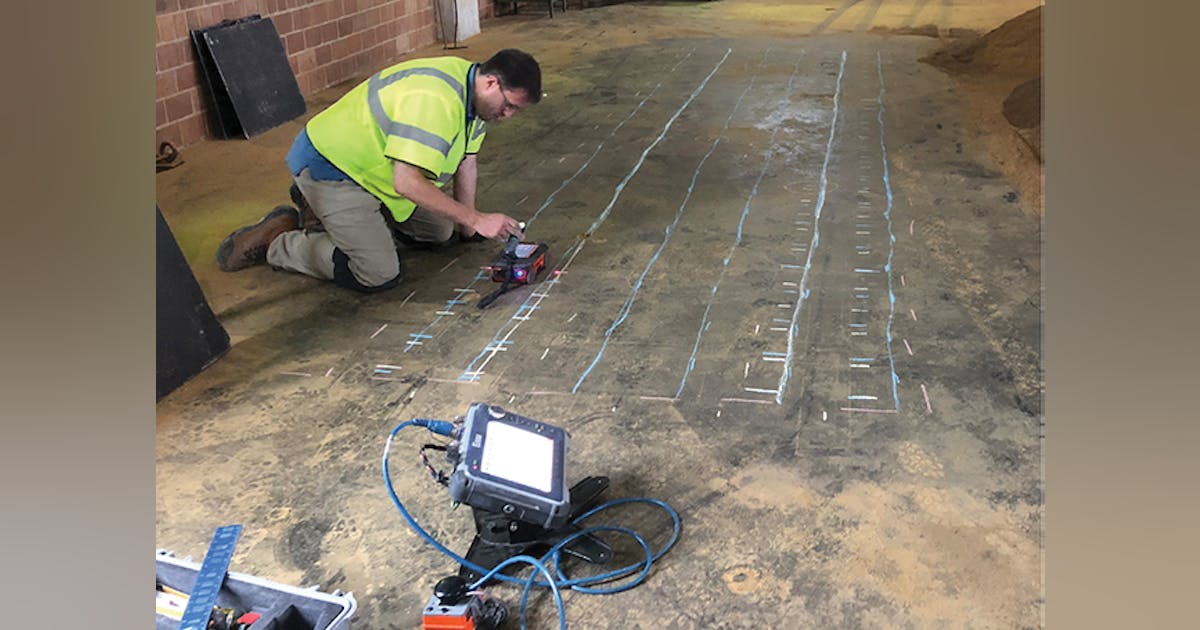Accuracy and Accuracy in Concrete Scanning Solutions
Accuracy and Accuracy in Concrete Scanning Solutions
Blog Article
Reveal the Transformative Power of Concrete Scanning in Optimizing Effectiveness and Safety And Security
Concrete scanning has actually become a critical tool in the construction sector, offering unequaled advantages in boosting task effectiveness and making certain security requirements. By making use of sophisticated technology, concrete scanning enables specialists to see past the surface, uncovering concealed intricacies that might influence the structural honesty of a structure. The transformative power of concrete scanning depends on its capacity to offer comprehensive insights and real-time data, reinventing how tasks are prepared and carried out. As we look into the details of this ingenious technique, a world of possibilities opens up, showcasing a new era of construction methods that focus on precision and safety.
Relevance of Concrete Scanning
Making certain the architectural honesty and security of building jobs starts with the critical action of conducting extensive concrete scanning. Concrete scanning is a non-destructive technique made use of to identify and map subsurface components within concrete structures. This process is vital in recognizing prospective risks, such as rebar, post-tension cords, and conduits, that might be hidden within the concrete. By using advanced innovations like ground-penetrating radar (GPR) and electro-magnetic induction, building and construction teams can properly situate these elements without triggering any damages to the framework.
The importance of concrete scanning can not be overemphasized, as it plays an important duty in avoiding mishaps, minimizing job delays, and making sure the lasting sturdiness of the building and construction. By determining possible risks prior to the construction stage begins, builders can execute ideal safety steps and make informed decisions relating to the layout and implementation of the project. Furthermore, concrete scanning aids in optimizing project timelines and budget by preventing unanticipated costs and delays that may occur because of unanticipated obstructions within the concrete. Ultimately, investing in detailed concrete scanning is an aggressive approach that enhances both effectiveness and security in building jobs.
Exactly How Concrete Scanning Works
Concrete scanning operates as a crucial tool in building tasks by using sophisticated modern technologies to find and map subsurface aspects without triggering structural damages. Ground Permeating Radar (GPR) and Electromagnetic Induction (EMI) are two primary approaches utilized in concrete scanning. GPR works by releasing high-frequency radar pulses into the surface, which recuperate when they come across subsurface objects or gaps. The moment taken for the signal to return shows the depth and area of the items. EMI, on the various other hand, utilizes electromagnetic areas to determine variances in product compositions, such as recognizing rebar or channels within concrete frameworks.
Throughout the scanning procedure, the information accumulated is evaluated in real-time, permitting immediate identification of potential dangers or challenges beneath the surface area. By using these innovative technologies, concrete scanning considerably decreases the threat of pricey damages and injuries on building and construction sites.
Benefits of Concrete Scanning
Making use of innovative scanning innovations in building and construction tasks supplies a plethora of benefits, improving both effectiveness and security on-site. One of the primary benefits of concrete scanning is the capacity to identify and situate ingrained items such as rebar, post-tension cable televisions, and conduits accurately. By identifying these elements before drilling or reducing right into concrete structures, the risk of unintentional strikes is considerably reduced, preventing possible injuries to employees and damage to the framework itself. In addition, concrete scanning aids in planning and designing more properly, as it supplies accurate information concerning the place and depth of structural parts.

Study: Concrete Scanning Success

In one more instance, a construction business used 3D concrete scanning to assess the condition old concrete structures in a historical building. The comprehensive scans given valuable insights right into the level of wear and tear and assisted focus on upkeep initiatives effectively. By proactively attending to locations of problem identified through scanning, the business had the ability to expand the life-span of the structure and guarantee passenger security.
These study underscore the transformative power of concrete scanning in enhancing effectiveness, accuracy, and security in building and construction tasks.
Applying Concrete Scanning in Projects
Implementing advanced scanning innovations throughout building and construction tasks has actually come to be significantly essential for enhancing accuracy and safety and security. By incorporating concrete scanning right into task preparation and implementation, building and construction teams can identify potential hazards, such as rebar or post-tension cable televisions, hidden within concrete structures. This proactive approach reduces the risk of mishaps, hold-ups, and pricey rework, inevitably leading to more effective job timelines and budget plans.
To execute concrete scanning efficiently, project managers need to team up carefully with skilled scanning professionals to determine one of the most ideal scanning methods for the particular task demands. Engaging scanning experts from the beginning of a task enables the team to produce detailed scanning strategies that resolve vital areas of concern and guarantee detailed data collection.
Moreover, incorporating concrete scanning into normal project operations can enhance decision-making processes, as real-time check information supplies immediate insights right into the condition of concrete frameworks - Concrete Scanning. This data-driven method promotes notified analytic and enables groups to make adjustments immediately, fostering a culture of web link performance and security throughout the task lifecycle

Verdict
Finally, concrete scanning plays a crucial function in boosting efficiency and safety in building tasks. By utilizing sophisticated modern technology to map and discover out underlying frameworks within concrete, this procedure helps to avoid expensive blunders, make certain structural integrity, and reduce dangers on website. With the capacity to uncover covert aspects and give precise information, concrete scanning proves to be a valuable tool for optimizing job end results and optimizing overall success.
Concrete scanning is a non-destructive technique utilized to identify and map subsurface elements within concrete structures. Furthermore, concrete scanning helps in enhancing task timelines and budget by staying clear of unexpected costs and hold-ups that might occur due to unpredicted blockages within the concrete. One remarkable case research study includes a massive remodelling project where concrete scanning played a vital function in guaranteeing task success.In one more case, a building business used 3D concrete scanning to evaluate the condition of aging concrete frameworks in a historic structure. By integrating concrete scanning into task preparation and execution, construction groups can recognize prospective risks, such as rebar or post-tension cables, this content concealed within concrete frameworks.
Report this page